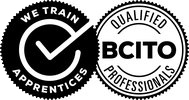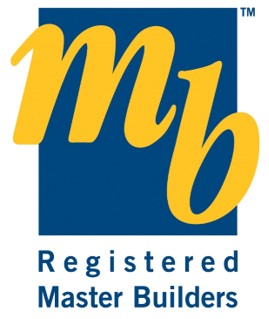What is a Reclad and Why is it Important for Your Home
A reclad is a process of replacing the exterior cladding of a building, usually with a new material that offers better insulation and weather resistance. Recladding is a popular option for homeowners in New Zealand who want to improve the energy efficiency of their homes, enhance their curb appeal, and protect their homes from the elements.
Recladding is a significant investment, and it’s important to understand the benefits of this process before you make the decision to reclad your home. The main advantage of recladding is that it can help improve the energy efficiency of your home. This can result in lower energy bills, improved indoor air quality, and a more comfortable living environment.
Another advantage of recladding is that it can boost the property value of your home. A well-maintained and attractive home is more appealing to potential buyers and can increase the resale value of your property. Additionally, a reclad can improve the durability and longevity of your home, reducing the need for costly repairs and maintenance in the future.
Recladding is also an opportunity to enhance the appearance of your home. With a wide range of materials and colors available, you can choose a reclad that complements the style of your home and adds character and curb appeal.
In summary, a reclad is an important investment in your home, offering a range of benefits including improved energy efficiency, increased property value, enhanced durability, and improved appearance. If you’re considering a reclad, it’s important to weigh the benefits against the costs and make an informed decision that’s right for your home and your budget.
The Advantages of Recladding: Improving Energy Efficiency and Boosting Property Value
Recladding is a renovation project that offers a range of advantages to homeowners. One of the main benefits of recladding is improved energy efficiency. A reclad can help reduce your energy bills by improving the insulation of your home and reducing heat loss. This can result in a more comfortable living environment and a reduction in your energy costs.
Another advantage of recladding is increased property value. A well-maintained and attractive home is more appealing to potential buyers and can increase the resale value of your property. A reclad can also enhance the overall appearance of your home, adding character and curb appeal.
Recladding can also improve the durability of your home, reducing the need for costly repairs and maintenance in the future. A well-installed reclad can protect your home from the elements and provide long-lasting protection and durability.
In addition to these benefits, recladding can also help improve indoor air quality. By improving the insulation of your home, you can reduce air infiltration, prevent drafts, and improve the overall air quality of your home. This can result in a healthier and more comfortable living environment.
Recladding can be a cost-effective way to renovate your home. By improving the energy efficiency of your home, you can reduce your energy costs over the long term, and by boosting your property value, you can increase your return on investment.
Recladding is a renovation project that offers a range of advantages to homeowners, including improved energy efficiency, increased property value, enhanced durability, improved indoor air quality, and cost-effectiveness. If you’re considering a reclad, it’s important to weigh the benefits against the costs and make an informed decision that’s right for your home and your budget.
Choosing the Right Material for Your Reclad: A Guide to the Pros and Cons of Different Options
When it comes to recladding your home, one of the most important decisions you’ll make is choosing the right material. There are a wide range of cladding materials available, each with its own set of pros and cons. Some of the most popular materials include timber, fiber-cement, metal, and vinyl.
Timber cladding is a traditional and popular choice, offering a warm and natural look to your home. However, it requires regular maintenance and can be vulnerable to moisture damage.
Fiber-cement cladding is a low-maintenance alternative to timber cladding, offering a durable and long-lasting solution. However, it’s a more expensive option and can be more difficult to install.
Metal cladding is a durable and low-maintenance option, ideal for homes in areas that experience harsh weather conditions. However, it can be more expensive than other cladding materials and may not suit every home design.
Vinyl cladding is a low-cost option that is easy to install and maintain. However, it may not be as durable as other cladding materials and may not have the same aesthetic appeal.
When choosing a cladding material for your home, it’s important to consider your budget, the climate and weather conditions in your area, and the style of your home. You should also consider the maintenance requirements of each material, as well as the overall lifespan and durability of each option.
To make the right choice for your home, it’s a good idea to speak to a professional cladding specialist, who can help you assess your needs and recommend the best material for your home. They can also provide you with a detailed quote and help you understand the costs and benefits of each option.
Choosing the right material for your reclad is an important decision that will impact the energy efficiency, appearance, and overall value of your home. By considering your needs, budget, and the pros and cons of different cladding materials, you can make an informed decision that’s right for your home and your lifestyle.
The Reclad Process: What to Expect and How to Prepare
Recladding your home is a complex and involved renovation project that requires the skills and expertise of a professional contractor. Hiring a professional contractor is essential for ensuring that your reclad is completed on time, on budget, and to a high standard of quality.
When choosing a contractor for your reclad, it’s important to look for someone who is experienced and knowledgeable in the field. A professional contractor should have a good understanding of different cladding materials and installation techniques, as well as a proven track record of delivering successful recladding projects.
It’s also important to look for a contractor who is licensed and insured, as this will provide you with peace of mind and protect you in the event of any accidents or damages during the reclad. A professional contractor should also provide you with a detailed contract and written warranty, outlining the scope of work, timelines, and expectations for the project.
Another important factor to consider when choosing a contractor is their communication skills and customer service. A good contractor should be responsive, proactive, and able to clearly explain the process and timeline for your reclad, as well as any challenges that may arise during the project.
It’s a good idea to get references and check reviews from previous clients, to get a sense of the quality of work and customer service offered by the contractor. You can also ask for samples of previous work and view photos of completed projects to get a better understanding of the contractor’s experience and expertise.
Hiring a professional recladding contractor is essential for ensuring a successful and stress-free renovation experience. By following these tips and taking the time to find the right contractor for your project, you can rest assured that your reclad will be completed on time, on budget, and to a high standard of quality.
The Cost of a Reclad: Balancing Your Budget with Your Goals and Expectations
When considering a reclad, one of the most important factors to consider is the cost. Recladding your home can be a significant investment, and it’s important to have a clear understanding of the costs involved and how they will impact your budget.
The cost of a reclad will depend on a number of factors, including the size of your home, the type of cladding material you choose, and the complexity of the installation. Other factors that can impact the cost of your reclad include the need for any structural upgrades, the cost of removing and disposing of your old cladding, and any additional features or enhancements you want to include in your new cladding.
To help balance your budget with your goals and expectations, it’s a good idea to start by setting a clear budget for your reclad. This will help you make informed decisions about the type of cladding material you choose and the level of work involved in the project.
It’s also a good idea to get multiple quotes from different contractors, to compare the costs and benefits of each option. This will help you make an informed decision about the contractor who is right for your project, and give you a better understanding of the costs involved.
The cost of a reclad is an important factor to consider when planning your renovation project. By setting a clear budget, getting multiple quotes, and considering the costs and benefits of different options, you can ensure that you have a successful and stress-free reclad experience that meets your goals and expectations.




